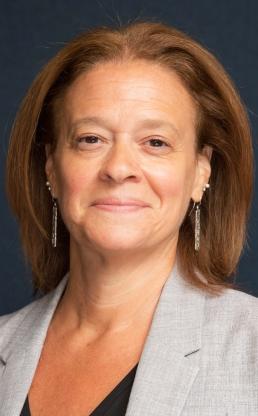
MaryJo Ginese
VP for Special Education
Each of you, resourceful and resilient, equipped yourself to be a lifeline for families and students during the COVID-19 outbreak. Dazed by how quickly life can change and struggling to protect yourselves and your loved ones, you nonetheless marshaled your creativity and confronted new and often frustrating technology. Most of you went one step further: You swallowed hard, conquered your fears and broadcast your faces and voices — not to mention your kitchens and living rooms — into students’ homes. In this way, you shepherded parents and students into remote learning and support.
Those of you who work with students with disabilities have faced unique challenges. Success in a remote learning environment, for example, requires a completely new set of behaviors. Our special educators working with students with disabilities worked quickly to establish new routines, new ways to engage their students in learning and new ways to facilitate positive interactions with peers. Our school nurses moved to the front lines of the public health emergency. Our speech teachers and our occupational and physical therapists rapidly became skilled tele-therapists. Our counselors and school social workers nurtured students with real-time coping strategies.
Our goal has always been to give students the knowledge and skills that will help them succeed in the real world. For decades, related services have been delivered in person according to a formula set out in students’ individualized education programs. Enter COVID-19. Receiving related services according to the direct service formula just isn’t workable. For some students, it is too much screen time. For others, it is just not feasible in their household. I have watched you do whatever it takes to continue to help students with disabilities succeed and feel a sense of mastery.
We have also always strived — often with limited success due to the many demands on our time — to share what we are doing with our students’ families. But in the pandemic, we discovered that we simply can’t deliver instruction or services remotely without working with the family. Simply getting students set up to engage over Zoom or Google Meets required parental support for most students.
These interdependent roles presented an unprecedented opportunity for collaboration. Special educators and therapists shared activities that parents could do with their child at home or in the community to reinforce learning and skills and accelerate progress. Relationships with our students’ families were formed, bonds were created, successes were celebrated and challenges were met by committed and respected partners.
The delivery of in-person therapies this summer at selected regional enrichment centers was another bright spot. Occupational, physical and speech therapists stepped up to the plate, trusting that their union would ensure the DOE provided the working conditions and personal protective equipment they needed to be safe. We didn’t let them down. Based on my recent visit to one of these sites, the results were overwhelmingly positive. Therapists were thrilled to be working in person with a diverse student population. It demonstrated what we know: Our students do best when they see us in person.
Whatever the future holds, teaching and learning, therapy and other supportive services will never be the same. You have used new technology and the internet in ways you never dreamed possible. You expanded your horizons along with those of your students. You now have a whole new set of skills that you will be able to use and build upon for the rest of your career.